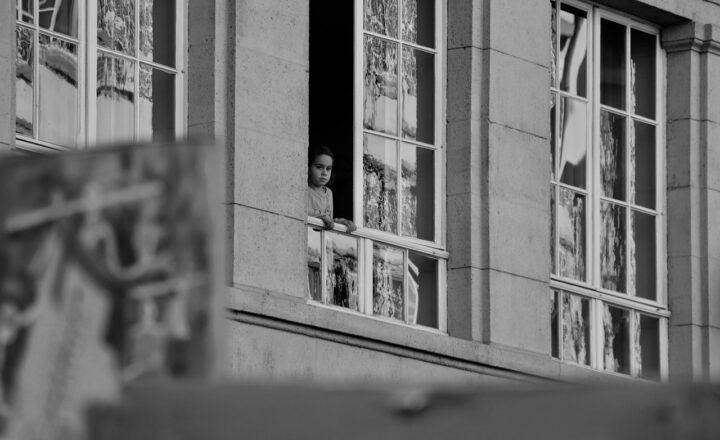The Fascinating History of the World’s Most Enduring Superstitions
November 16, 2024

Superstitions have woven themselves into the fabric of human history, persisting through centuries and cultures, shaping beliefs, behaviors, and traditions. From the fear of black cats to the practice of throwing salt over one’s shoulder, these rituals often reflect deep-seated human anxieties or cultural histories. In this article, we delve into the origins, evolution, and significance of some of the most enduring superstitions around the globe.
1. What Are Superstitions?
At their core, superstitions are beliefs or practices that are not rooted in scientific proof, often associated with luck, fate, or the supernatural. They arise from the desire to control the uncertain elements of life and provide psychological comfort. For many, these practices become habitual, ingrained from childhood and often passed down through generations.
Superstitions often fill a void of understanding in uncertain times. As people grapple with fear of the unknown, they turn to these beliefs for support and reassurance. They reflect not only cultural values but also the universal human experience of trying to make sense of the world.
2. The Origins of Superstition
Superstitions can trace their roots back to ancient civilizations where primitive man sought to explicate the world around him. Early human societies turned to rituals to appease gods or spirits, hoping to influence outcomes in their favor.
For example, during the time of the Ancient Egyptians, omens and divinatory practices were common, as daily survival depended on accurately predicting floods or natural disasters.
**The Influence of Religion**: Many superstitions are closely linked with religious traditions. For instance, the fear of the number 13 in Western societies may stem from the Last Supper where Judas, the betrayer of Jesus, was the 13th guest to sit at the table.
Similarly, in cultures where spirits and ancestors play a vital role, practices such as leaving offerings or performing cleansing rituals are common to ward off misfortune or attract protection.
**Cultural Transmission**: As societies merged through trade, exploration, and conflict, superstitions adapted and transformed. They blended with local customs, resulting in unique interpretations specific to regions or communities.
3. Enduring Superstitions Across Cultures
Superstitions can range from the oddly charming to the bizarre. Here are some of the most enduring superstitions that continue to be observed today:
**A. The Evil Eye**:
Found in numerous cultures, the ‘evil eye’ refers to the malevolent glare that could cause harm or misfortune. In Mediterranean cultures, amulets known as ‘nazar’ are used to divert the perceived threat of the evil eye. This superstition can often be seen as an expression of jealousy or envy.
**B. Breaking a Mirror**:
The belief that breaking a mirror brings seven years of bad luck is popular in Western cultures. This fear likely stems from the notion that mirrors reflect not only our appearance but also our souls, and breaking a mirror symbolizes a break in one’s fortune and luck.
**C. The Number 13**:
In many Western cultures, the number 13 is often considered unlucky. This superstition can be connected to both the Last Supper and various historical events that have taken place on the 13th. Buildings often skip the 13th floor entirely, showcasing how this fear permeates daily life.
**D. Friday the 13th**:
Tied to the number 13, Friday has also been viewed as unlucky in certain cultures. This belief was popularized by the conjunction of the two and is so prevalent that many people avoid travel, major purchases, or personal decisions on this day.
**E. Walking Under a Ladder**:
Walking under a ladder is said to bring bad luck, possibly due to the triangular shape formed by the ladder against a wall, which was thought to represent the Holy Trinity in Christian tradition. Disturbing this triangle was seen as invoking bad luck.
**F. Horseshoes**:
Horseshoes are often hung above doorways to attract good luck and ward off evil spirits. This practice has roots in ancient Greece and was further reinforced in Europe when iron was believed to have protective qualities against witches.
4. The Psychological Impact of Superstitions
Psychologically, superstitions serve distinct roles in people’s lives. Here are some of the ways they impact behavior and mindset:
**A. Psychological Comfort**:
Engaging in superstitious rituals can provide a sense of control and reduce anxiety, especially during uncertain circumstances. For example, many athletes believe in personal superstitions to enhance performance and focus.
**B. Placebo Effect**:
The belief in the efficacy of a superstition can create real effects. Studies in psychology show that individuals who believe in their superstitions can experience a significant alteration in their behavior and emotions.
**C. Cultural Identity**:
Superstitions often contribute to a sense of belonging within a community. Shared beliefs can strengthen cultural ties, reinforcing group identity and social cohesion.
5. Modern Perceptions of Superstition
In today’s globalized world, superstitions maintain their relevance, often co-existing with scientific understanding. While some may dismiss them, others hold firm to traditions as a point of cultural pride.
**A. The Influence of Media**:
Movies, literature, and social media often amplify superstitions. Many people find comfort in the familiarity of these beliefs, feeling they provide necessary structure in an increasingly chaotic world.
**B. Superstitions in Sports**:
Sports enthusiasts frequently engage in superstitious behaviors, whether wearing lucky socks or following particular routines during games. These actions are driven by the desire to enhance performance and ward off bad luck.
**C. The Rise of Skepticism**:
While many still practice superstitions earnestly, a growing number of individuals question the validity of these beliefs. Scientific advancements and critical thinking have led some to seek logical explanations for phenomena previously ascribed to superstition.
6. Conclusion: The Unbreakable Bonds of Superstition
As history has shown, superstitions have remarkable staying power, navigating time and culture while adapting to human needs. They symbolize the dynamic interplay between tradition and the existential desire to understand the world.
In the end, whether one views superstitions as cherished elements of cultural heritage or misguided beliefs, their impact on human behavior cannot be underestimated. By providing comfort, encouraging connections, and influencing actions in the face of uncertainty, superstitions will likely continue to endure, weaving themselves deeper into the story of humanity as we move forward into an ever-changing future.








